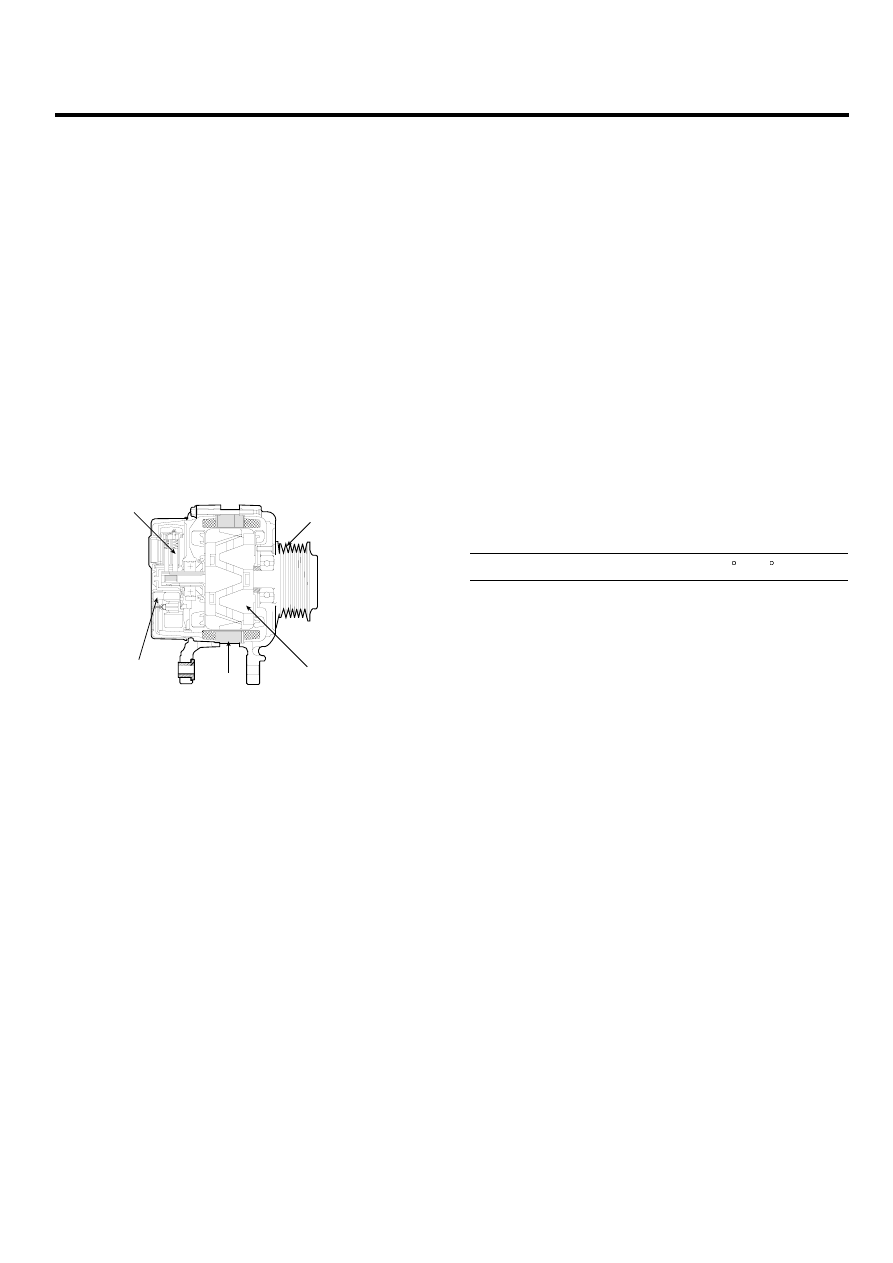Hyundai Santa Fe (2006 year). Manual - part 294

CHARGING SYSTEM
EEA -17
CHARGING SYSTEM
DESCRIPTION
ECC3DBD3
The charging system included a battery, an alternator with
a built-in regulator, and the charging indicator light and
wire.
The Alternator has built-in diodes, each rectifying AC cur-
rent to DC current.
Therefore, DC current appears at alternator "B" terminal.
In addition, the charging voltage of this alternator is regu-
lated by the battery voltage detection system.
The alternator is regulated by the battery voltage detec-
tion system. The main components of the alternator are
the rotor, stator, rectifier, capacitor brushes, bearings and
V-ribbed belt pulley. The brush holder contains a built-in
electronic voltage regulator.
Drive belt pulley
Brush
Rectifler
Stator
Rotor
LBKG001B
ON-VEHICLE INPECTION
E87FA4FF
CAUTION
• Check that the battery cables are connected
to the correct terminals.
• Disconnect the battery cables when the bat-
tery is given a quick charge.
• Never disconnect the battery while the engine
is running.
CHECK BATTERY VOLTAGE
1.
If 20 minutes have not passed since the engine was
stopped, turn the ignition switch ON and turn on the
electrical system (headlamp, blower motor, rear de-
fogger etc.) for 60 seconds to remove the surface
charge.
2.
Turn the ignition switch OFF and turn off the electrical
systems.
3.
Measure the battery voltage between the negative (-)
and positive (+) terminals of the battery.
Standard voltage : 12.5 ~ 12.9V at 20 C(68 F)
If the voltage is less than specification, charge the
battery.
CHECK THE BATTERY TERMINALS AND FUSES
1.
Check that the battery terminals are not loose or cor-
roded.
2.
Check the fuses for continuity.